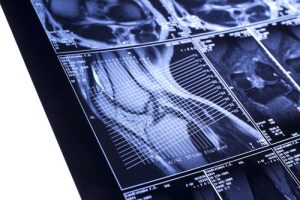Diagnostic imaging and orthopedic magnetic resonance (MRI) technology plays a role in sports, and other medicine. When injured athletes are brought in, their joints are examined with traditional x-ray machines using lenses designed specifically for this purpose. In some cases, the diagnostic testing escalates to MRI machines to capture an image that could show a broken bone or fracture not able to be seen through traditional methods.
A computed tomography (CT) scan is also used to diagnose orthopedic injuries such as traumatic fractures. A CT is not considered as high a quality imaging device as an MRI when it comes to taking images of soft tissue. When a physician is concerned an athlete may have suffered an injury to the soft tissue, he will order an image by using a three-dimensional CT scan.
New lens technology allows microscopic objects to be imaged from nine varying angles at once to create a three dimensional image.
Engineers worked on a prototype thermoplastic lens, approximately the size of a fingernail. It has a flat top, surrounded by eight facets. While the stone/lens has been cut for symmetry, the lens itself is not symmetric as the sizes and angles vary in tiny ways that are difficult to discern with the naked eye.
This freeform lens is beneficial because it is capable of imaging microscopic objects – much smaller than traditionally able to be imaged. The lens lets researchers see the true shape of microscopic samples in 3D rather than the usual 2D images.
Universe Kogaku designs and manufactures optical lenses for medical imaging technology. We also design custom lenses for industrial, high tech and electronic applications, scanners, CCTV, CCD/CMOS, surveillance systems, machine vision and night vision systems.